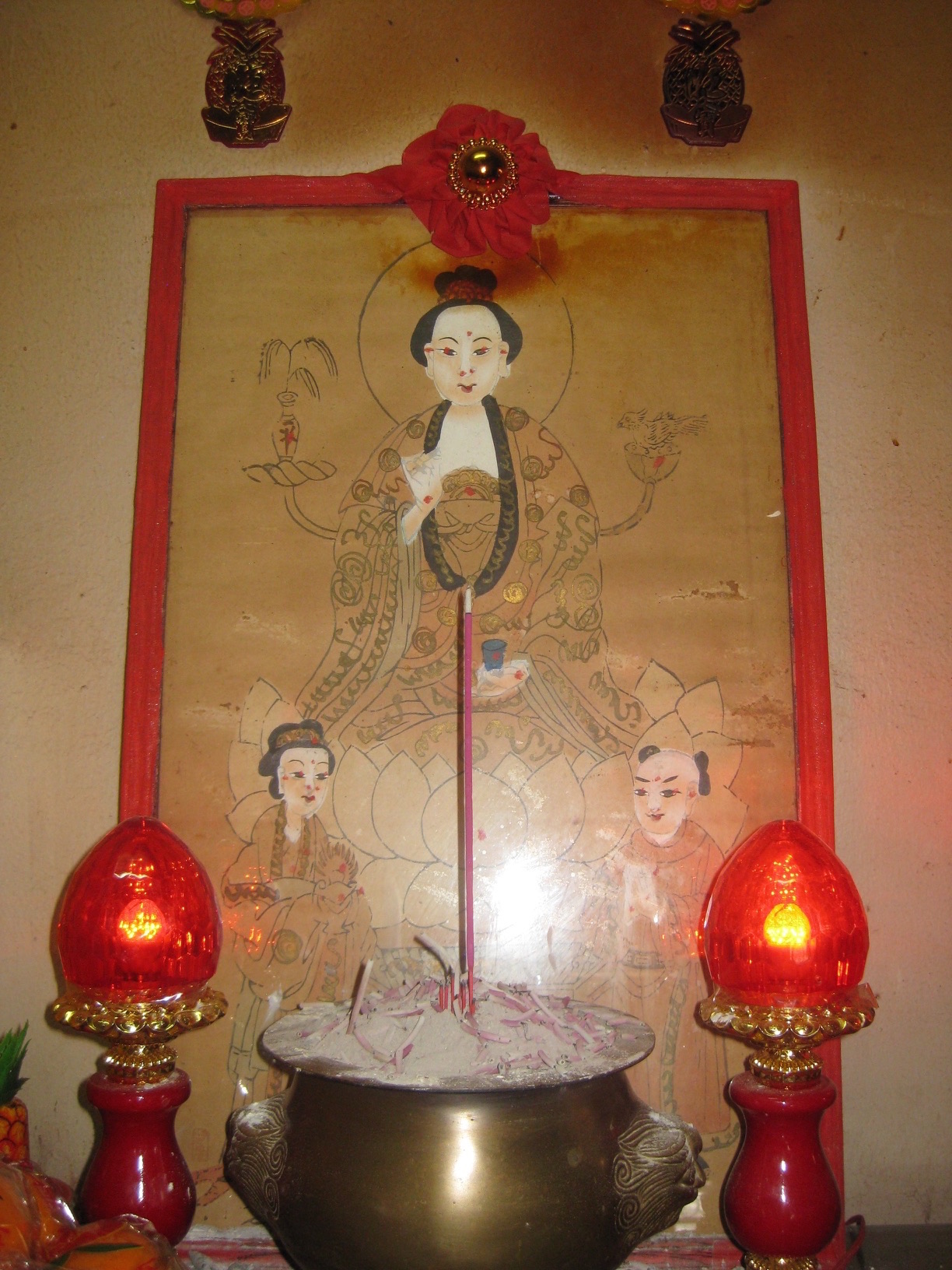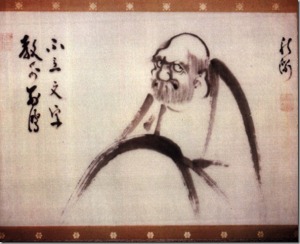VARIOUS STANCES AND THE MOST INSPIRING ZEN MASTER

Picture of Guan Yin Bodhisattva in Grandmaster Wong's House
Question 7
What is the difference between our Horse-Stance, Wuji Stance, Standing Zen and Sitting Zen?
Which ancient Zen Master is your biggest inspiration?
Sifu Anton Schmick
Answer
The difference in physical form is obvious, which you know very well. I shall therefore address other aspects of their difference.
In terms of energy, the Horse-Stance is more solid, whereas the Wuji Stance is more flowing, though the energy in both cases is focused at the abdominal dan tian.
The physical form of the Wuji Stance and Standing Zen is the same. The former term is used in Taijiquan, whereas the latter term in Shaolin Kungfu. Relatively Wuji Stance focuses more on energy, whereas Standing Zen focuses more on mind.
The physical form of sitting meditation is the same in Shaolin Kungfu and Taijiquan. In Chinese, it is called “zuo chan” in Shaolin Kungfu, which actually means “sitting meditation”. In Taijiquan it is called “jing zao”, which means “silent sitting”.
Amongst Horse-Stance, Wuji Stance, Standing Zen and Sitting Zen, Sitting Zen or sitting meditation is the most stable. The energy can be focused at the abdominal dan tian or at the bottom dan tian at the hui-yin vital point.
In terms of mind, the focus in the Horse-Stance is at the abdominal dan tian, whereas in the Wuji Stance and Standing Meditation, the mind is focused all over the body.
In Sitting Meditation, the mind is focused on a single thought, or is expanded to no thought.
With this understanding of their difference in terms of physical form, energy and mind, we shall be more cost-effective in considering their difference in training objectives and results desired.
If we wish to develop internal force, the best choice amongst the four would be the Horse-Stance because it will give us the best result. However, it is the most difficult to practice.
For those not ready to meet the demand of the Horse-Stance, a good choice for internal force development is the Wuji Stance, provided they are able to relax, and know how to tap energy from the Cosmos.
If we wish to generate an energy flow, such as to overcome injuries or illness, the best choice of the four is the Wuji Stance. Standing Zen, which focuses more on mind, is the next choice. The Horse-Stance and Sitting Zen are not suitable for this purpose.
If we wish to train mental clarity or nurture spiritual joys like being happy, peaceful and free, Standing Zen is the best choice, followed by Wuji Stance. The Horse-Stance and Sitting Zen also provides these benefits, but are not as cost-effective.
If we wish to attain a satori or spiritual awakening, Sitting Zen is the best choice, followed by Standing Zen, Wuji Stance and Horse-Stance.
Of course, the above description presumes all other things were equal, which is almost never true in real life, but this presumption is necessary for a theoretical comparison. In practice a master using the worst choice will still have better result than a student using the best choice.
The second presumption is that these exercises are practiced correctly, which actually is not easy. Many people practice them wrongly, even in seemingly easy exercises like Wuji Stance and Standing Zen, and therefore derive harmful side-effects instead of benefits.
In this respect, students in our school are lucky. Because we have a sound understanding of their philosophy, not only we ensure that our students practice correctly but also they have good results in a relatively short time.
For example, many of our students attain satori in Standing Zen. This is incredible, considering that even monks practicing professionally take a few years to attain satori in Sitting Zen. This is one important reason why we do not normally practice Sitting Zen in our school. We can attain the results of Sitting Zen faster and safer using Standing Zen.
The Zen Master who has provided me with the biggest inspiration is Guan Yin Bodh Satt, the Bodhisattva of Great Compassion.
Here I interpret the term “Zen Master” in its widest sense. In the sense that most people would interpret it, which would include the 28 Zen masters from India, and the 6 Zen masters from China, my biggest inspiration is Bodhidharma.

The great Bodhidharma
The above is reproduced from the thread 10 Questions to the Grandmaster about Zen in the Shaolin Wahnam Discussion Forum
LINKS
